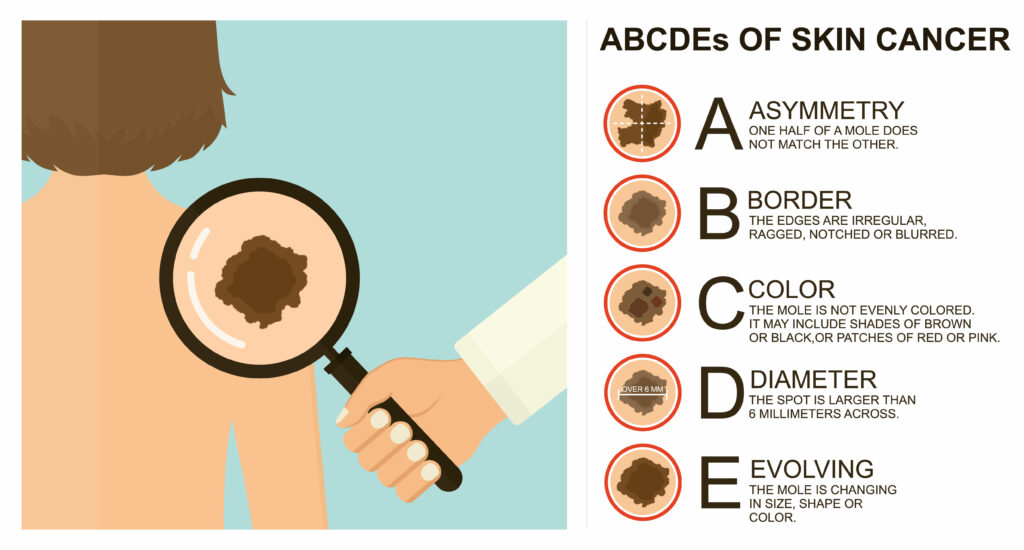Identifying spots to be concerned about can be as easy as ABCDE; literally! This simple acronym can act as a guide for you and your family when checking your skin. It may help in knowing if you should go see a skin doctor or GP, in between regular skin checks.
Skin Health Institute gives us a rundown of how to use this method and a guide of how to check our skin. Here are some things to look for:
A – Asymmetry
Often Melanomas are asymmetrical which means that if you made a line through the middle, each side wouldn’t be the same.
B – Borders
Moles that aren’t dangerous often have borders that are even and identifiable, whereas the borders of Melanomas can be irregular and less easy to identify.
C – Colour
Some believe that melanomas are all brown or black (Please see our article “Not all Melanomas are brown or black, what other type of melanoma should you be on alert for?”) however they can be a range of colours and often have more that just a single colour in the one spot.
D – Diameter
Melanomas are often larger than 6mm in diameter, and moles that are benign, less than that. Diameter is the length from one side of the mole to the other.
E – Evolving
One sign that should motivate you to see a doctor as soon as possible is if you notice a mole changing or growing. Usually benign moles don’t do this. Other things to be aware of is if you notice you have a new mole after you turn 30 years of age, or have a sore that hasn’t healed after a long period of time (“after a few months”). If you see a mole bleeding, crusting, or is itchy please book in to see a doctor immediately.

If you would like more information on how to check you or a partner’s skin, please visit https://www.skinhealthinstitute.org.au/page/78/detection.
And if you have noticed that one or multiple of these factors match a mole you have, don’t hesitate to call 03 5201 7030 to book in a spot check appointment with one of our experienced skin doctors at Qutis skin check clinic.


Recent Comments